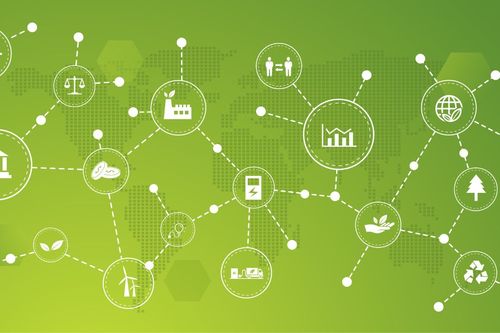An opinion piece by a partner at Ekimetrics, a global data science solutions provider
September 22, 2022

An opinion piece by a partner at Ekimetrics, a global data science solutions provider
Organizations are striving to make more responsible, sustainable and ethical decisions. But to ensure businesses can focus on activity that has a genuine impact, leaders must first make sure they are using their data intelligently.
We know that AI and data science can play a pivotal role in the process of transformation towards sustainability. As the Intergovernmental Panel on Climate Change has noted, “Digitalization can enable emission reduction, but can have adverse side effects unless appropriately governed.”
To make a real difference, businesses must differentiate ‘doing good’ from good intentions. By truly understanding their data and using a common framework and shared language, businesses can make better, more measurable decisions.
A new approach
Many businesses are looking to understand how they can operate within planetary boundaries, including how to play their part in mitigating their contribution to climate change and reducing their impact – and this is where data science comes in. By using AI, businesses can measure and accelerate sustainable transition while using algorithms to make operational improvements to support decarbonization.
Intelligent use of data enables businesses to rethink how they approach the problem. For example, many environmental consultants use bottom-up accounting practices to measure a company’s environmental impact. This requires every gram of carbon to be considered before any action can be taken.
Data science and AI turns this thinking on its head, allowing for a more agile approach that allows businesses to measure what matters, make quick decisions that bring about demonstrable change, and optimize their plans to meet their long-term strategy.
By using data to map out the impacts and contingencies – from research and development to production, manufacturing to recycling – data scientists can show a company’s holistic impact. Rather than becoming a huge project that ultimately delays action, such work can be done in a matter of weeks so solutions can start to be implemented immediately – not potentially months or even years down the line.
AI can be used to process unstructured, textual data and extract qualified information using natural language processing. This approach can fill gaps in their data record and model elements of a company’s impact – perhaps further down the supply chain or in other markets or categories.
The ability to use data and AI to quickly measure, take action and optimize means that businesses can set out a long-term pathway to sustainable transformation that tackles their scope 1, 2 and 3 emissions.
For example, a CPG company wanted to remove palm oil from products across a complex product portfolio. Using AI to test at scale ingredients across thousands of products let them to make the switch in a matter of weeks, whereas traditional methods would have taken months and significant manual resources.
Beyond the bottom line
Importantly, businesses also need to make sure the right people are making timely, informed decisions using the data. This means thinking beyond just financial results.
Financial metrics have for too long been the sole concern of corporations, boards, and CFOs. Financial performance, margin, top- and bottom-line profitability are all still important.
But, going forward, companies will need to measure and report both differently and more broadly. Triple bottom line reporting demands that companies focus on social and environmental impact in addition to financial performance. Profit, yes, but also people and planet.
Changing business models, decarbonizing supply chains, and moving from a linear to a circular economy is not easy, and time is against us. We have no time to waste. Action is required today to limit our impact on our increasingly fragile ecosystem – not tomorrow or three years from now.
However, business decision-making and shifting shareholder perception can be slow and bureaucratic. Fortunately, AI and data science provide businesses with both the tools and the opportunity to identify the areas where they can make the most impact – and then to scale those improvements across both their business and supply chain.
Figure 1: 
Using a ‘measure,’ ‘decide,’ and reduce’ framework, business can structure their approach and thinking. First, it’s essential to be able to measure their impact at scale. Without this understanding, any well-intentioned actions they’re taking may not have the desired impact quickly.
With this understanding of both the size of the impact and the size of the task, they can prioritize activity and develop their roadmap – decide what to do. The final step in the process then is to take action to reduce that impact and monitor what is being achieved. AI can illuminate and accelerate at every stage.
The world stands on the precipice of a great emergency. This is also a once-in-a-generation moment of opportunity. With the help of the secret weapons of AI and data science, today’s enterprises have the chance to reshape both their business models and the global economy to measure, decide and optimize. This is how they can best reconcile the economic imperative with the many environmental and social challenges we face to help deliver a better future.
You May Also Like
.jpg?width=700&auto=webp&quality=80&disable=upscale)
.jpg?width=700&auto=webp&quality=80&disable=upscale)
.jpg?width=700&auto=webp&quality=80&disable=upscale)


.jpg?width=300&auto=webp&quality=80&disable=upscale)

.jpg?width=300&auto=webp&quality=80&disable=upscale)